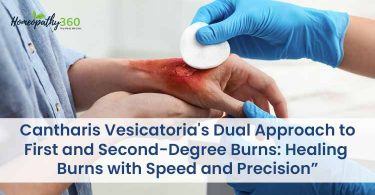A 39-year-old man presents to his primary care physician with a 6- month history of pain in his right ankle. The pain has been insidious, and it is accompanied by stiffness and swelling of the ankle joint. The patient cannot move his ankle well. Additionally, despite using a crutch, he cannot perform his daily activities. The patient has no history of trauma to the affected joint. There is no history of fever, back pain, or any other joint involvement. He has no history of sexually transmitted diseases, and his family history is
negative for arthritis.
On physical examination, the patient has normal vital signs. The cardiac findings are negative for murmurs or rubs. No rash or penile discharge is observed. Examination of the right ankle elicits discomfort with passive range of motion, revealing limitations with inversion and eversion and with flexion and extension. On palpation, the patient has mild tenderness. There is obvious swelling of the joint, which feels firm. There is no warmth or
redness over the joint. The remainder of the physical examination is unremarkable. Plain radiograph of the ankle is obtained (see Image 1). After the results of the plain radiograph are interpreted, the primary care
physician orders a follow-up magnetic resonance imaging (MRI)
scan of the joint (see Images 2 to 4).
Diagnosis
Synovial osteochondromatosis (SOC) SOC, also called synovial chondromatosis, is typically a benign, monoarticular proliferation of the synovial lining of the joint, bursa, or tendon sheath, with cartilaginous metaplasia. Proliferation of the synovium produces small nodules that break off and migrate toward the joint cavity. Within the joint cavity, metaplasia transforms the nodules into cartilaginous bodies that enlarge and typically undergo central necrosis. The necrotic portion becomes calcified and,
eventually, ossified to varying degrees. Large joints, such as the knee, hip, elbow, and shoulder, are most commonly affected; however, as this case illustrates, the disease process can involve other joints as well. In fact, any synovial surface, including extra-articular bursae, may be affected.
As the condition progresses, the joint becomes painfully distended with many cartilaginous bodies, which may number in the hundreds and can result in mechanical symptoms, such as restricted motion with eventual joint destruction and secondary osteoarthritis.
The incidence of the disease is 2-4 times higher in men than in women, with an age range of 20-50 years. SOC usually results in several years of joint pain and swelling. At the time of presentation, the affected joint often has a limited range of motion. The patient may also have a history of the joint locking up. Malignant transformation into chondrosarcoma usually occurs after repeated partial synovectomy procedures, but it is rarely reported.
Plain radiographs are commonly diagnostic for SOC; they can demonstrate
ossified intra-articular loose bodies, and features of osteoarthritis may also be seen. In the absence of ossified loose bodies, soft-tissue swelling may be appreciated; if so, a differential diagnosis of pigmented villonodular synovitis may be considered. Computed tomography (CT) scanning, if performed, shows the same findings as radiography does, but CT scans may also reveal nonossified loose bodies. MRI is the modality of choice for demonstrating effusion, synovial changes (which are hyperintense on T2-weighted images, with enhancement, after the administration
of a gadolinium-based contrast agent), and loose bodies (which are isointense to hypointense on T1-weighted images and which have signal voids if they are ossified).
Courtesy: www.eMedicine.com
Homeopathic Management
A rare benign condition of uncertain etiology and pathogenesis, Synovial Chondromatosis (SC) is most often seen intraarticularly in adults but only a handful of cases have been reported extraarticularly in children. Symptoms and physical signs consist of pain, swelling, and osteoarthritic changes related to a mass effect.
Leading remedies:
Kali iodatum [Kali-i]
This remedy in indicated by a spongy swelling of the joint, a feeling of heat inside the joint, and a gnawing boring pain, which is worse at night and accompanied with restlessness.
Bryonia [Bry]
Here the synovitic joint is pale red and tense, with sharp, stitching pains, greatly aggravated by motion and relieved by the warmth of the bed. It suits rheumatic or traumatic synovitis.
Ledum [Led]
Suits acute traumatic synovitis where there is an effusion into the joint; the parts are sensitive, the pains are aching and tearing with but little fever. It is especially adapted to sub-acute affections of the knee joint.
Causticum [Caust]
This remedy has prominent swelling of the joints, which show fluctuation and indolency. There is stiffness of the joints and a tendency to hydroarthrosis.
Sulphur [Sulph]
Is especially useful in strumous patients when exudation has taken place. It is particularly useful when the knee is affected, and it comes in after Apis and Bryonia.
Pulsatilla [Puls]
This remedy suits gouty, rheumatic or blenorrhagic synovitis; the joints are swollen , with sharp, stinging pains, which force the patient to move the part. There is a feeling of deep soreness, as of sub-cutaneous ulceration.
Mercurius [Merc]
This remedy suits syphilitic or strumous synovitis, with tendency to complete destruction of the joint. The general symptoms will indicate the remedy, such as aggravation at night, profuse sweating, feeling of coldness and chilliness, restlessness, a threatening suppuration and the characteristic cachexia.
Anti-sycotic remedies like Medorrhinum and Thuja may be used intercurrently for complete cure.





